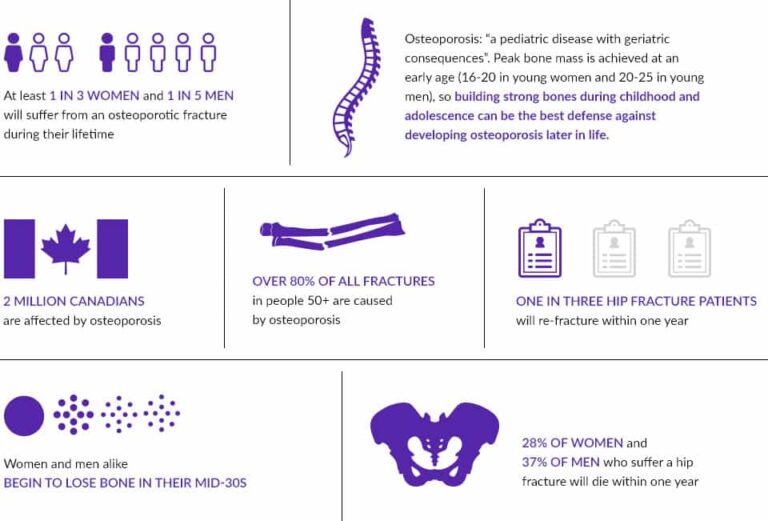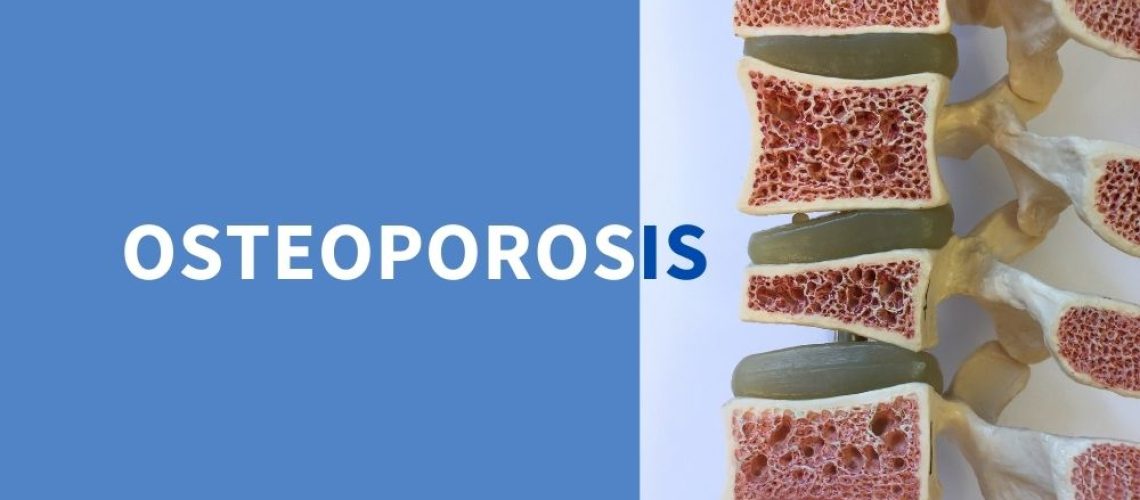Osteoporosis. Overview
Osteoporosis means “porous bone.” Osteoporosis is a bone disease that occurs when the body loses too much bone and makes too little bone. As a result, bones become weak and may break from a fall or, in severe cases, even from sneezing or minor bumps.
Osteoporosis or bone loss is a deadly disease that affects most older adults in modern societies. 2 million Canadians suffer some degree of bone loss, including men and women.
John Hunter, an eighteenth-century English surgeon, discovered that old bone is destroyed or resorbed as new bone is laid down in the body. This process is now known as remodelling and was later shown to play a critical role in osteoporosis.
On the other hand, Andrew Taylor MD, osteopathy founder, reasoned that disease could have its origins in slight anatomical deviation from average. He then proved he could restore health by treating the body with his hands, naming his innovative approach to restoring health: Osteopathy. From Greek, “osteo” meaning bone, and “pathos” disease.

Pic source: osteoporosis.ca
What are the first signs of osteoporosis?
- Back pain, caused by a fractured or collapsed vertebra
- Loss of height over time
- A stooped posture
- A bone that breaks much more quickly than expected
Is osteoporosis curable?
There’s no cure for osteoporosis, but proper treatment can help protect and sustain your bones. Osteopathic manipulations can help slow the breakdown of bone in your body, and some medicines can spur the growth of new bone.
What will happen if osteoporosis is left untreated?
Osteoporosis that is not treated can lead to severe bone breaks (fractures), especially in the hip and spine. One in three women is likely to have a fracture caused by osteoporosis in her lifetime. Hip fractures can cause severe pain.
Can an osteopath help with osteoporosis?
Osteopaths are well placed to screen you for this condition and offer practical advice on risk factors, prevention and treatment.
Screening:
Your osteopath can screen you for the condition using a unique online screening tool called the FRAX questionnaire.
The FRAX tool has been developed by World Health Organisation (WHO) to predict the 10-year probability of hip or other major osteoporotic fracture in patients based on determinants generally accepted to be the key risk factors.
Prevention Advice:
Patients assessed as being at risk of osteoporosis will be given dietary, physical exercise and lifestyle advice to help manage risk factors to reduce the condition’s impact on their lifestyle. Try CALCIUM CALCULATOR ONLINE
Osteopathic manipulations:
The osteopathic treatment acts on the neuro-musculoskeletal system, based on the relationship between structure and function to stimulate the body’s inherent self-regulatory process.
Using methods of treatment aimed at improving proprioception and posture, you can change conditions predisposing to complications of the disease, such as decreased balance and increased risk of falls due to hyperkyphosis and reduced muscle strength.
To improve joint mobility and improve muscle responses in the course of osteoporosis, the therapeutic approach uses functional osteopathic techniques and soft tissue techniques designed to increase the ability to accept changes of length and tension more efficiently and thereby improve the ability of structures to adapt to movements with a plausible decrease in pain and functional limitations and increased autonomy (self-sufficiency and independence).
It paid particular attention to the restrictions of mobility at all levels: articulation, myofascial, visceral and head, following the principle that the condition of mobility is a predisposing factor for the onset of pain, functional impotence and instability.
Physiotherapeutic Exercise
Exercise can help you build strong bones and slow bone loss. Exercise will benefit your bones no matter when you start. Still, you’ll gain the most benefits if you start exercising regularly when you’re young and continue to exercise throughout your life.
Swimming, cycling and exercising on elliptical trainers can provide an excellent cardiovascular workout, but they don’t improve bone health.
How do I get started?
With effective osteopathic manipulations and the right therapeutic exercises, you can improve bone density and decrease fracture risk. Treatment and Exercise programs should be tailored to each individual. Call our clinic at 403-814-0404 and speak with our Osteo Health Team to learn how you can improve your bone health.

